Kronopod
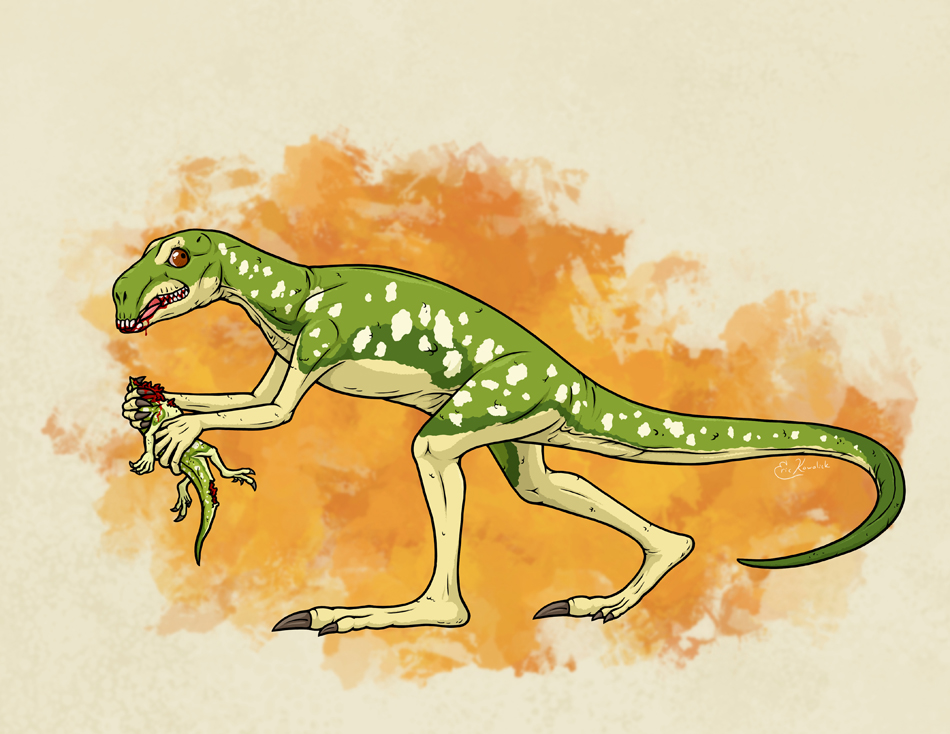
The Kronopod had spectacularly large feet, dominated by two gigantic clawed toes -- which were flanked by another, apparently vestigial pair. These claws would have provided excellent balance, and combined with its robust arms and muscular tail may have allowed the Kronopod to lift and carry large objects. Perhaps it could bring bunches of food back to its nest, drop rocks to crack open hardy shells, and toss would-be predators to their demise.
Some Kronopod fossils have been discovered with what appears to be their own young in their bellies, suggesting they engaged in cannibalism.
Gigant Venteraxe
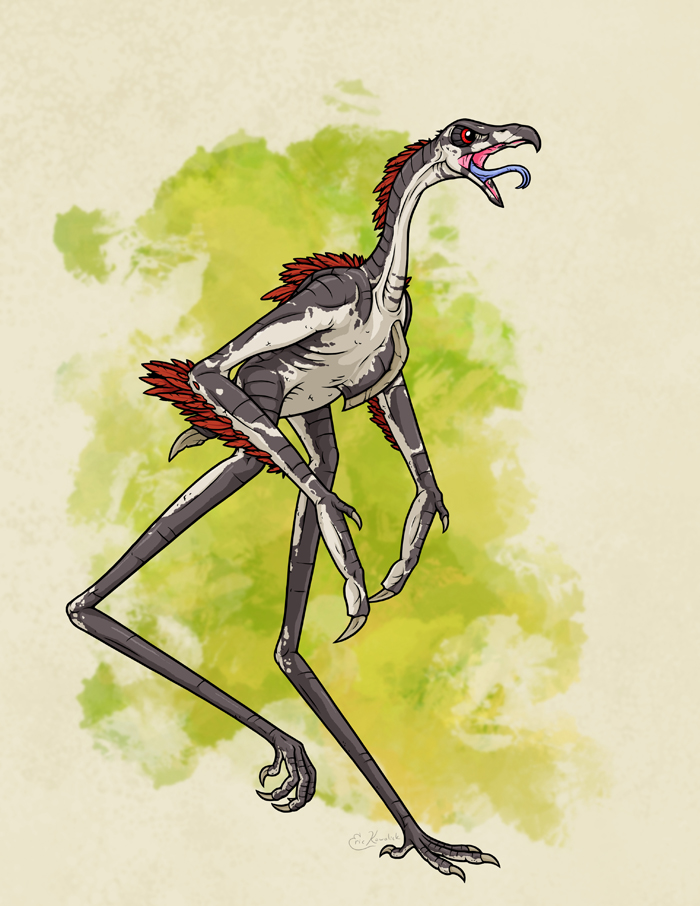
Like other members of the aptly-named Bladebelly family, the Gigant Venteraxe completely lacked teeth of any kind but was more than compensated by the cruel axe-like appendage on it's torso. These fiendish predators would have grabbed ahold of (or even skewered!) prey and then repeatedly rake them against its "belly blade" until it had chunks small enough to swallow whole.
Nenyj Varhien
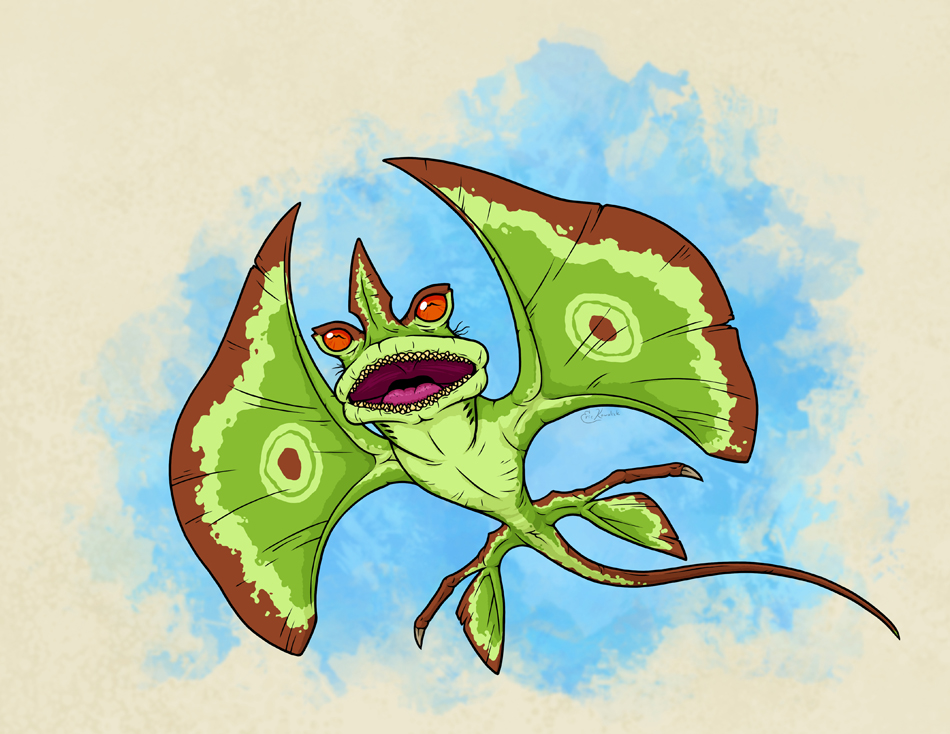
A flying carnivore that lived during the Holocene epoch, the Nenyj Varhien's skeleton was quite unlike other vertebrates' and may have been comprised of cartilage instead of bone -- a strange adaptation but one that would have drastically reduced its body weight, a necessity for flight.
The Nenyj Varhien most likely slept upside down while clinging to tree branches with its tail, and may have even been camouflaged to resemble a bunch of leaves to avoid being preyed upon.
Greater Sailback
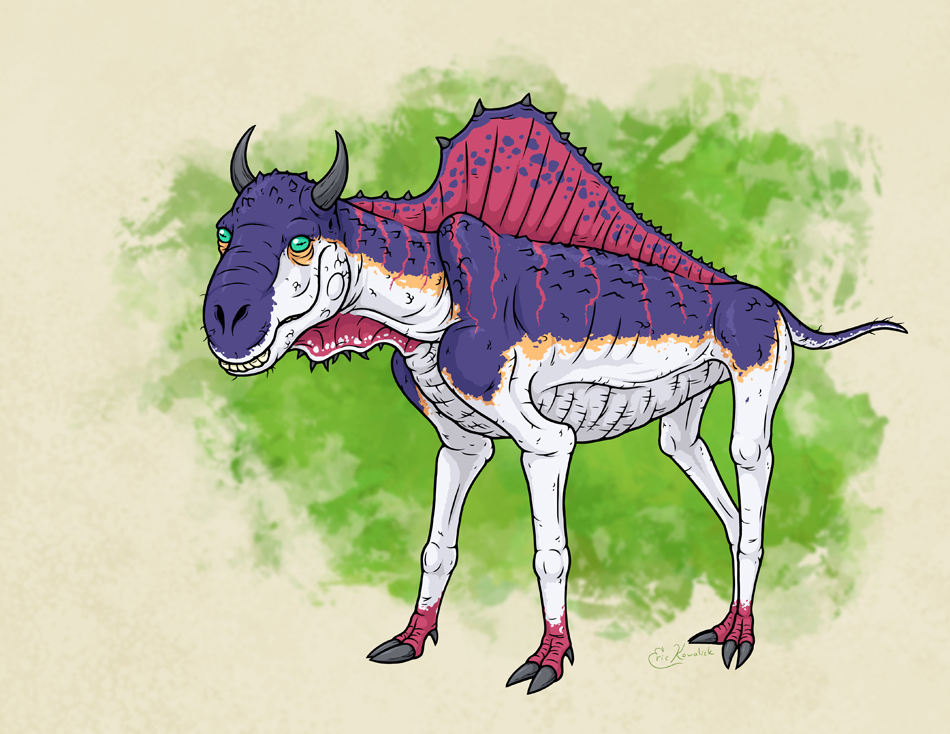
One of the Holocene's larger herbivores, the Greater Sailback is instantly recognizable by its elongated spines. It is believed to have been cold-blooded, so the "sail" would have allowed it to quickly warm up and become active in the morning and to just as easily cool off if it got too hot. Its long legs may have allowed the Sailback to wade deeply into lakes or rivers to reach plants its competitors couldn't get. Perhaps it even spent most of its life in the water...
Curiously, the Greater Sailback went extinct at about the same time a smaller relative's population exploded across nearly the entire globe.
Falchirus
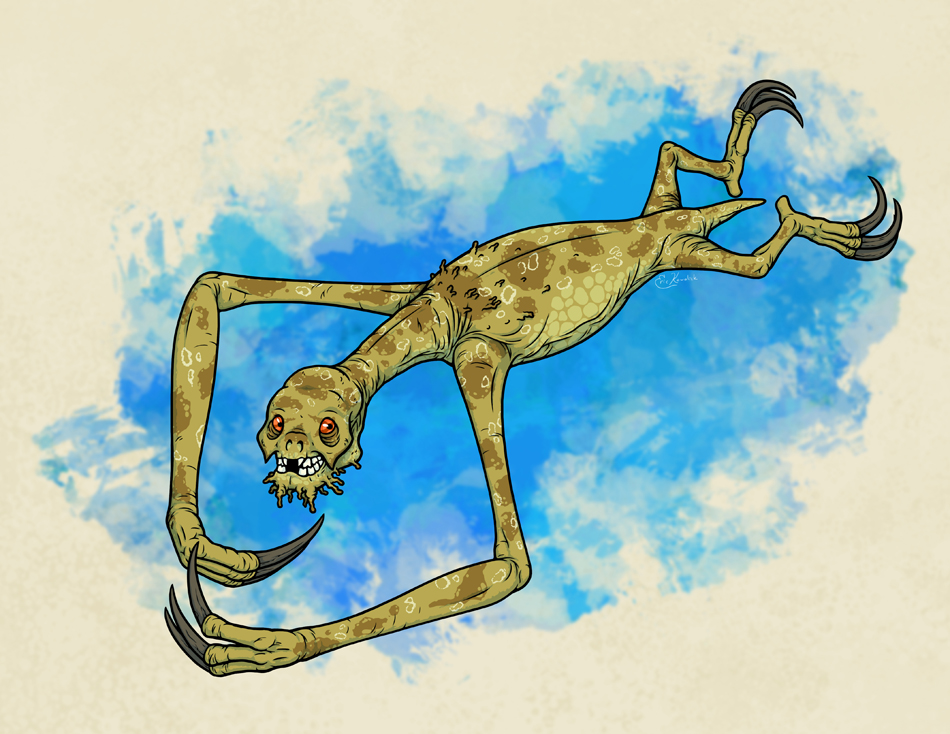
This creature from the Holocene epoch had three enormous hook-like claws on each limb, which would've made simply walking a difficult task. And running? Forget it! Instead, Falchirus spent most of its time underwater where its giant claws wouldn't get in the way.
Falchirus' unusual teeth make it hard to tell what exactly it ate, but its trademark claws point to a predatory lifestyle. Indeed it is thought to have been an ambush hunter, lying in wait at the bottom of a lake or river with its feet hooked onto a sunken log or rock as an anchor, and swiftly grabbing prey unfortunate to waltz in front of it. Falchirus' long neck would also have allowed it to reach the surface to breath without exposing its entire body.
Modern animals reinterpreted in a loving tribute to our poor understanding of extinct life. Guess the real identities!
1 ⋅ 2










